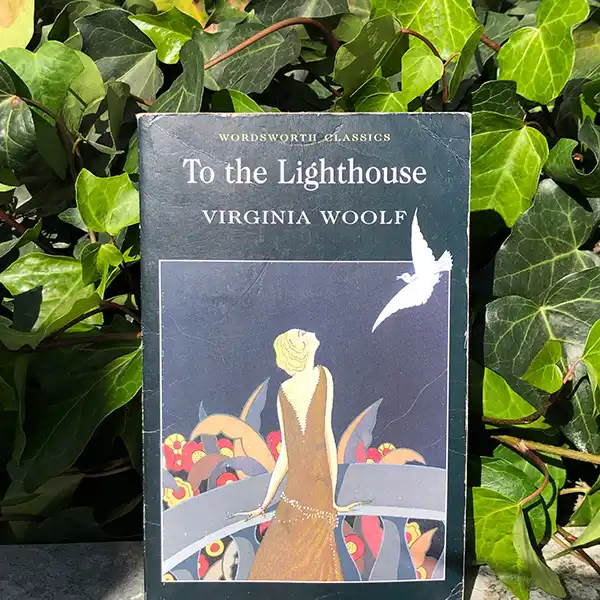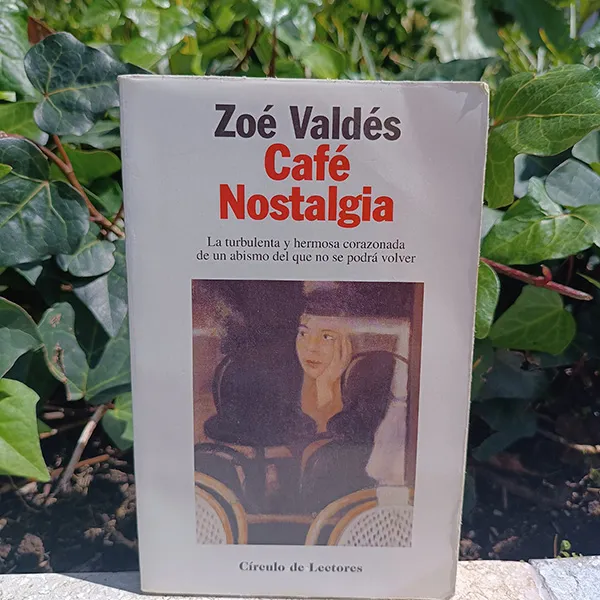Descripción
Libro To the Lighthouse (libro en inglés). Sinopsis libro, reseña libro. A pioneering work of modernist fiction, using her unique stream-of-consciousness technique to explore the inner lives of her characters, Virginia Woolf’s To the Lighthouse is widely regarded as one of the greatest artistic achievements of the twentieth century. This Penguin Classics edition is edited by Stella McNichol, with an introduction and notes by Hermione Lee.
To the Lighthouse is at once a vivid impressionistic depiction of a family holiday, and a meditation on marriage, on parenthood and childhood, on grief, tyranny and bitterness. For years now the Ramsays have spent every summer in their holiday home in Scotland, and they expect these summers will go on forever; but as the First World War looms, the integrity of family and society will be fatally challenged. With a psychologically introspective mode, the use of memory, reminiscence and shifting perspectives gives the novel an intimate, poetic essence, and at the time of publication in 1927 it represented an utter rejection of Victorian and Edwardian literary values. Libro To the Lighthouse (libro en inglés).






s.penkevich –
The lighthouse is out there, it’s eye caressing our struggles with cold indifference. We can beat against the tides in pursuit, but will we ever reach it? Does it even matter, and is it even attainable? If we only look to that spot on the horizon we miss the love around us, miss those gasping for our love and friendship, miss the callouses born in dedicated strife rowing us towards the end. Like in all things, it is the journey that matters, not the destination. Futility can be beautiful, especially when we don’t give up on plunging our oars against it and making our place in a world destined to end in a …. flash…..
‘…for it was not knowledge but unity that she desired, not inscriptions on tablets, nothing that could be written in any language known to men, but intimacy itself, which is knowledge…’
To enter within the pages of Woolf’s 1927 masterpiece, To the Lighthouse, is to dive headlong into a maelstrom of vivid perspectives and flawless prose. Few authors are able to achieve the vast scope of human emotions and frustrations as of this novel, let alone accomplish such a task in the mere 209pgs Woolf offers. Flowing to the breezy soundtrack of waves breaking upon the shoreline, To the Lighthouse investigates the frailties of life and human relationships in breathtaking prose through the minds and hearts of Woolf’s characters as they struggle to affect a state of permanence within an ever-changing ephemeral existence.
Reading Woolf is like reading an extended prose poem. Each word shimmers from the page as every sentence illuminates the deep caverns of the heart. She accentuates her themes through carefully chosen imagery and metaphors, or constantly alluding to the passage of time themes through metaphors of fraying draperies and aging furniture and keeping the focus on the island setting through descriptions such as ‘bitter waves of despair’. The notion of each person as an island plays a major role in the novel. The waves continuously crash on shore much like the collision of characters as they interact and attempt to understand one another. These repetitions of ideas and symbols are used through this novel as a method of reinforcing them. Similarly, the characters often repeat their own beliefs, much like a mantra, to help reassure themselves of who they are.
Woolf effectively utilizes her own stream-of-consciousness style to tell her story, examining each characters unique perspectives and feelings of one another that culminate to form a tragically beautiful portrait of the human condition. Unlike the stream-of-consciousness technique employed by others such as James Joyce or William Faulkner, Woolf retains a consistence prose style, being more an observer of the inner-workings of each character instead of melding with their consciousness and writing in their own words. While this may seem a cop-out to some, it felt actually beneficial to the structure of this novel, such as allowing Woolf to seamlessly transition from character to character. This also was in keeping with the ‘person as an island’ theme since we could only observe through an authorial perspective and never truly know commune with the character, leaving the reader as just another wave crashing upon the shoreline of their consciousness. Late in the novel, Lily ponders over the power of narrating what one thinks a person is like as a method of understanding them: ‘this making up scenes about them, is what we call “knowing” people, “thinking” of them, “being fond” of them!’ There are several metafictional moments such as this within the novel that justify Woolf’s stylistic choices. Woolf’s decision to maintain a constant narration makes the book ‘about’ perspectives instead of ‘constructed out of’ perspectives.
Human interaction is the crux of this novel, and also one of its saddest messages. These characters interact daily and are under the constant scrutiny of one another, yet, try as they might, they can never truly understand each other. ‘She would never know him. He would never know her. Human relations were all like that, she thought, and the worst were between men and women’. They all try to leave their impressions upon one another but, at the end of the day, are still only left with their perspective and opinion of the others instead of the unity and knowledge of who their contemporaries truly are inside and what motivates their actions. They are forever separated by the fact that souls cannot ever meld and become one. The real tragedy is that these characters, while desiring to understand and be understood, more often than not hurt one another, often due to fear and insecurity, through their attempts of reaching into the others soul. Mr. Ramsey, while being exceptionally needy of praise and security, keeps his family at arms length through his neediness while resenting them and wishing they would leave him be: ‘he would have written better books if he had not married’.
These characters reach out to one another as if to a life raft, they need something to cling to and bind them with the present. Each character in their own way, be it Mr. Ramsey’s philosophy, Mr. Carmichael’s poetry, Lily’s paintings or Mrs. Ramsey’s guiding hand, attempt to leave their permanent scar on the face of eternity. Mrs. Ramsey in particular fears death and the unstoppable change that pushes us forward towards the grave. ‘A scene that was vanishing even as she looked…it shaped itself differently; it had become, she knew, giving one last look at it over her shoulder, already the past’. She watches in horror as time slips by, firmly believing nothing good can come with the future and goes so far as to cover up Deaths bleak head in the form of a boars skull that hangs on her children’s walls. ‘With her mind she had already seized the fact that there is no reason, order, justice but suffering, death, the poor. There was no treachery too base fir the world to commit… No happiness lasted’. No matter what, time will pass us all by, like the lighthouse beam, illuminating us and calling us up from the dark for one brief moment, and then passing on again to leave us formless in the dark. If is fitting, given the fears of death and time passing, that death comes in this novel swiftly and suddenly. There is no telling when the beam of life will be gone, no preparations can be made, and we must deal with it. Such is existence. These fears can only be subsided, our lives given meaning, if we can reach each other, understand and love each other, thereby existing forever in memory and framed by love in the hearts of those we knew.
This novel takes much inspiration from Woolf’s own life (Mr. and Mrs. Ramsey being based on Virginia’s own parents, making this an elegy to her own mother as well as an elegy to Mrs. R) and doubly serves as a cutting commentary on the literary world in which Woolf was immersed. Woolf set out to oppose the obdurate male society that dominated the literary scene, Tansley’s words to Lily of ‘women can’t paint, women can’t write’ echoing a stereotype that Woolf would have had to combat her whole life. Woolf combats the patriarchy through this novel, creating a sleek, short masterpiece as opposed to the behemoth (but equally amazing) Ulysses, filled with attacks on the ‘masculine intelligence’ and making parody of the male opinions on women. Often the reader is given the opinion though a male perspective that ‘women made civilization impossible with all their “charm”, all their “silliness”…’, yet these same men crave the attention and affection of Mrs. Ramsey – they fly into an anxious fit without the reassurance of the women. They spend their time thinking lofty thoughts, but it is the women that keep order. Mrs. Ramsey despises such masculine activities as hunting and is the head of the household and the keeper of peace, yet she still reads as a bit of a cautionary tale. She still succumbs to the gender roles expected of her, such as being submissive to Mr. Ramsey and playing matchmaker – although this serves more as her attempt to maintain control over life than actually falling into stereotypes. Lily is therefor given as the ideal, the one who can press on despite naysayers like Tansley, be a self-sustaining, ambitious woman that keeps an understanding and open heart and painting those around her into eternity through her perseverance.
This was without a doubt one of the finest novels I have ever read. Woolf offers pages after page of incredible poetry, never letting up for an instant. It takes a bit to get your footing, as she drops the reader right into the scene without any exposition, but once you have found your bearings your heart will swell with each flawless word. The middle section of the novel, the brief 20pgs of ‘Time Passes’, may be one of the most enduring and extraordinary displays of writing I have ever seen. This novel will force the reader to face the bleak truths of change and death along with the characters, yet offer a glimmer of hope through unity and love that is sure to strike a chord in even the coldest of hearts, all the while being a stunning anthem of feminism. This is a novel to read, and read again and again as you witness your own present and future fade into the past.
5/5
‘Of such moments, she thought, the thing is made that endures’
This novel came highly recommended to me through two trusted friends, whose reviews I would like to share with you here and here.
But don’t just take our word for it, because this is one that should not be missed!